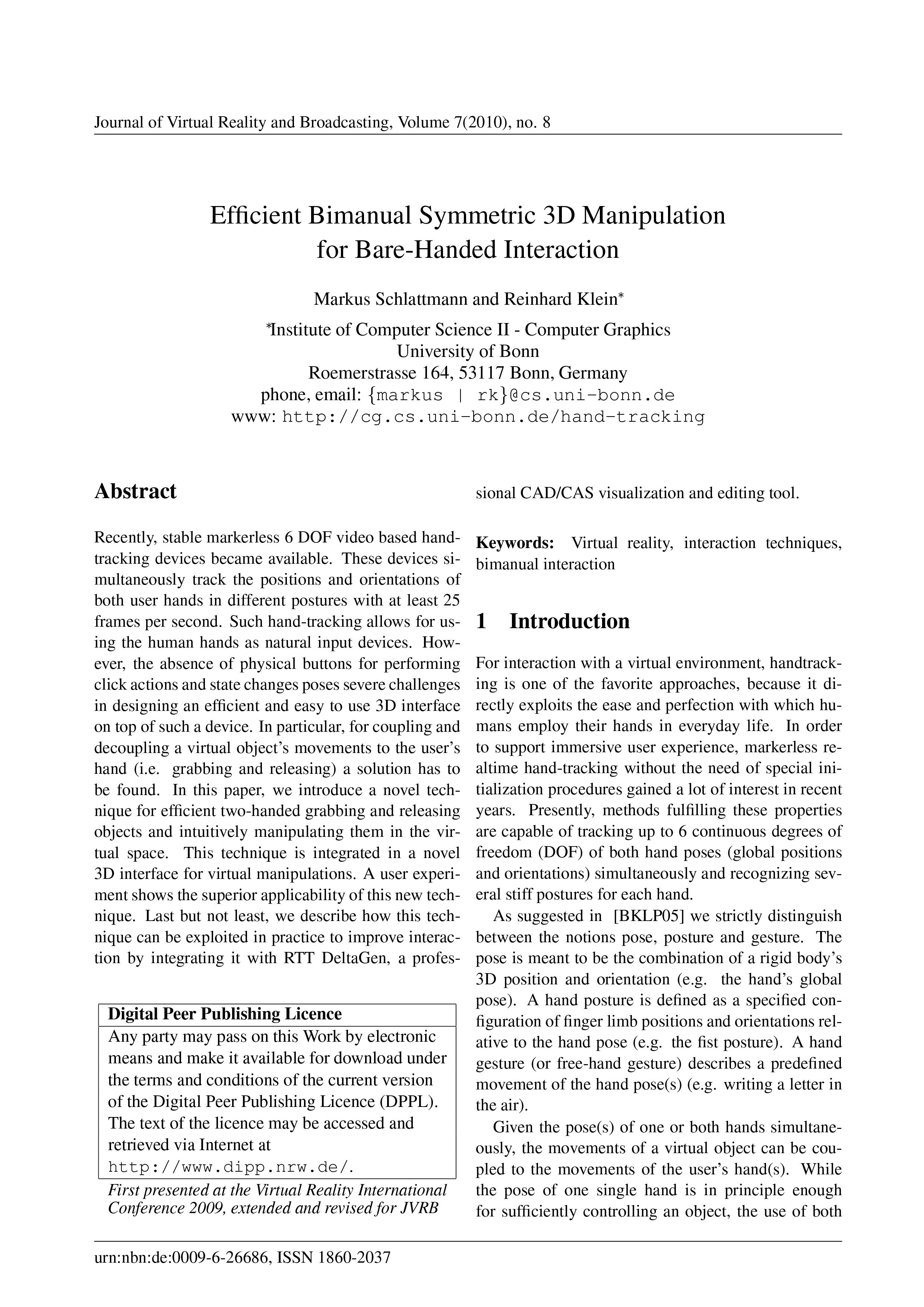Efficient Bimanual Symmetric 3D Manipulation for Bare-Handed Interaction
DOI:
https://doi.org/10.20385/1860-2037/7.2010.8Keywords:
bimanual interaction, interaction techniques, virtual realityAbstract
Recently, stable markerless 6 DOF video based handtracking devices became available. These devices simultaneously track the positions and orientations of both user hands in different postures with at least 25 frames per second. Such hand-tracking allows for using the human hands as natural input devices. However, the absence of physical buttons for performing click actions and state changes poses severe challenges in designing an efficient and easy to use 3D interface on top of such a device. In particular, for coupling and decoupling a virtual object’s movements to the user’s hand (i.e. grabbing and releasing) a solution has to be found. In this paper, we introduce a novel technique for efficient two-handed grabbing and releasing objects and intuitively manipulating them in the virtual space. This technique is integrated in a novel 3D interface for virtual manipulations. A user experiment shows the superior applicability of this new technique. Last but not least, we describe how this technique can be exploited in practice to improve interaction by integrating it with RTT DeltaGen, a professional CAD/CAS visualization and editing tool.
Published
2010-10-21
Issue
Section
VRIC 2009





